Sheet Bend
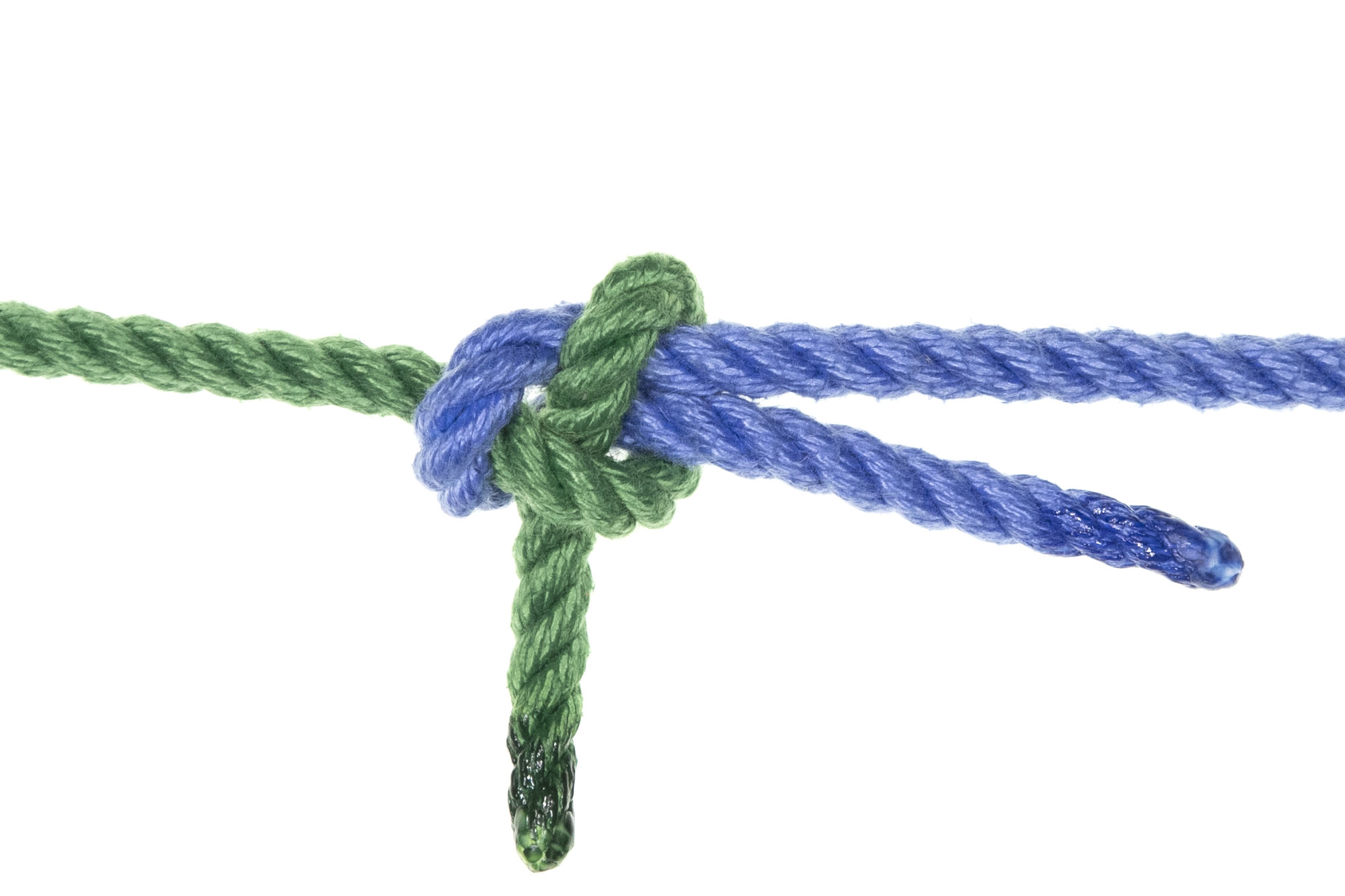
The sheet bend is a good general-purpose bend and one of the most useful civilian knots. It’s the basis for the sheet bend extension.
When to use it
Although suitable for casual use in free-standing rope, the sheet bend isn’t bulletproof. We strongly recommend using a technical bend any time you’re hanging something valuable high in the air.
Step by step
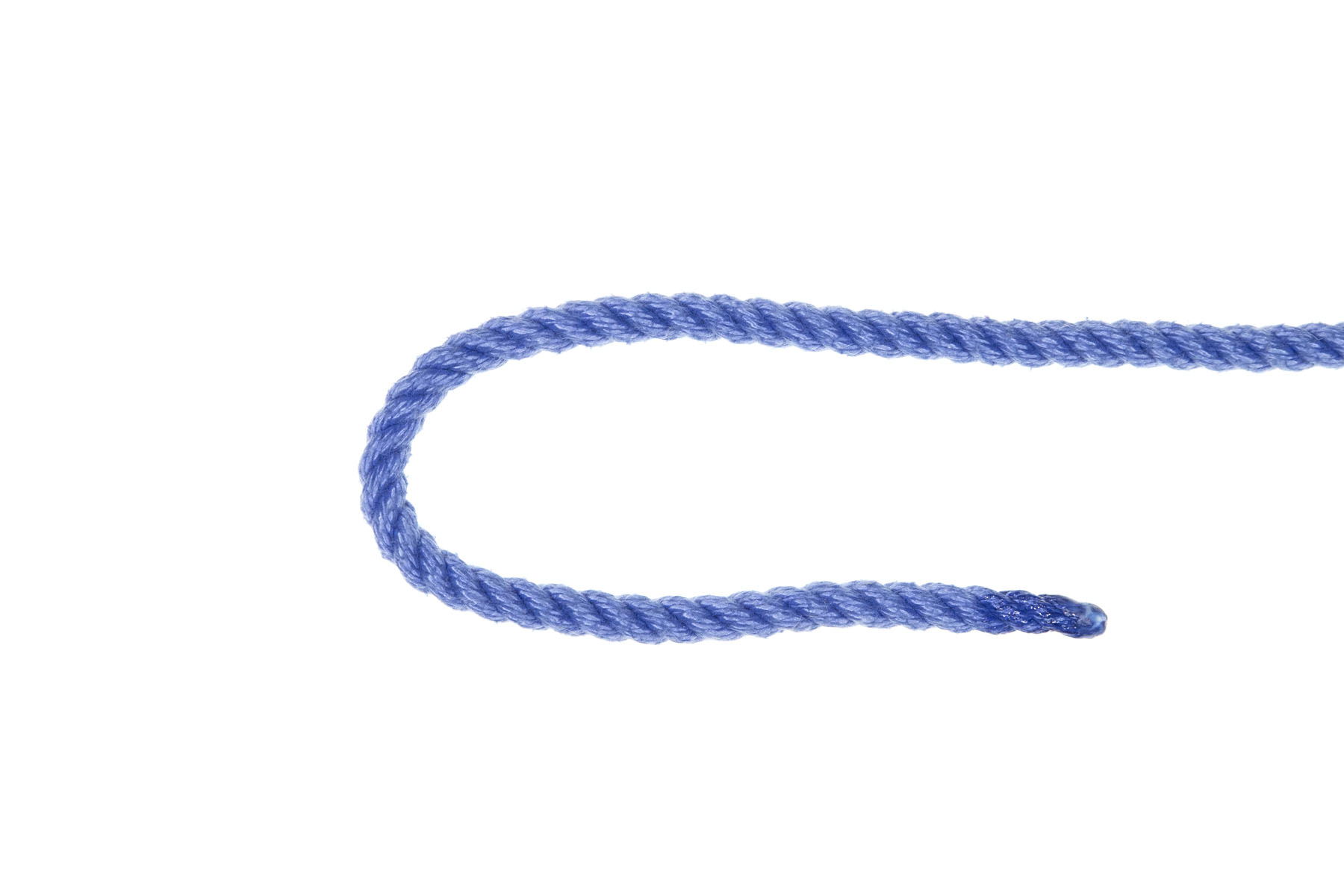
1Double the blue rope back on itself, creating a short bight.
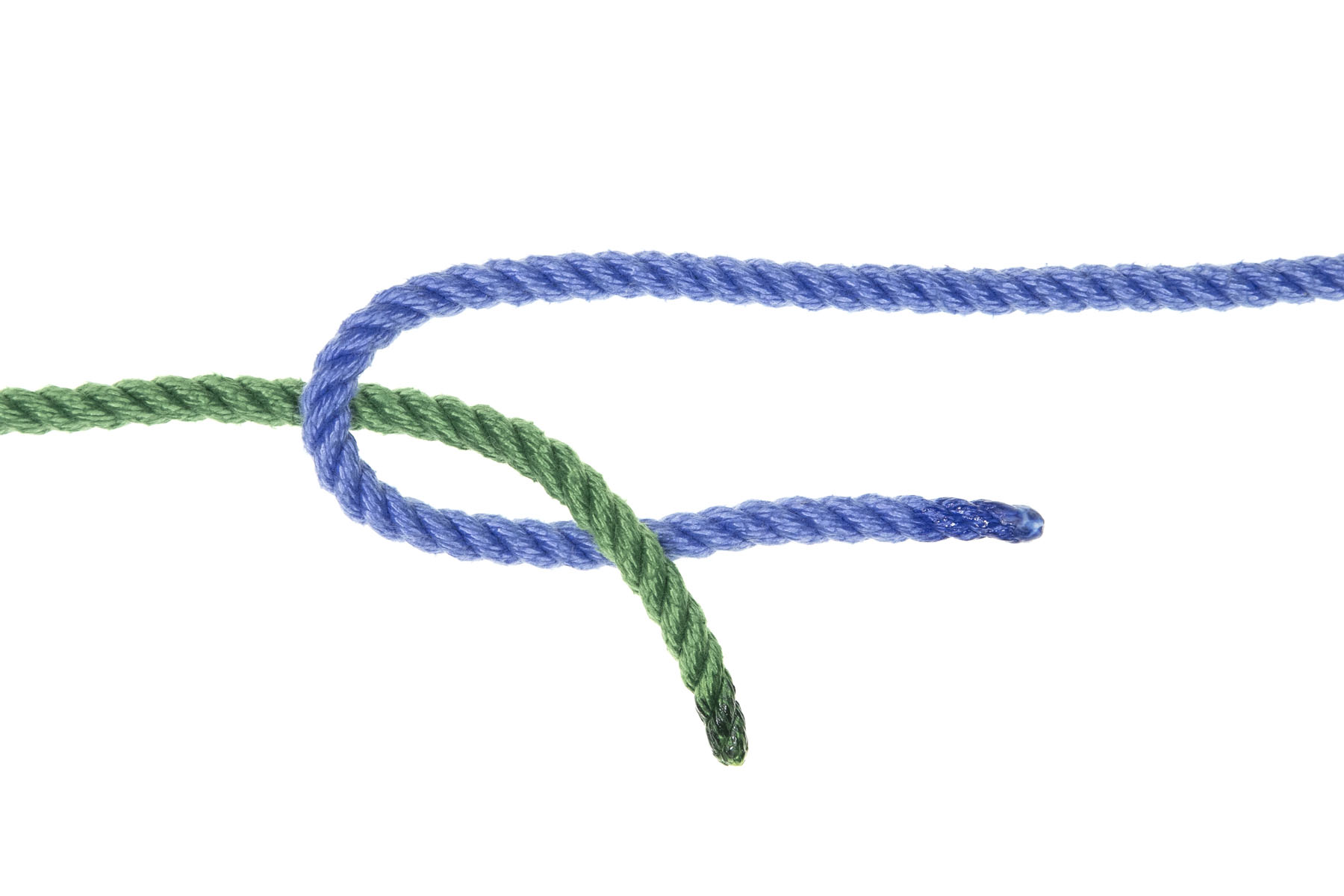
2Go up through the bight and over the working end of the blue rope.
It is important that you go over the working end and not the standing part.
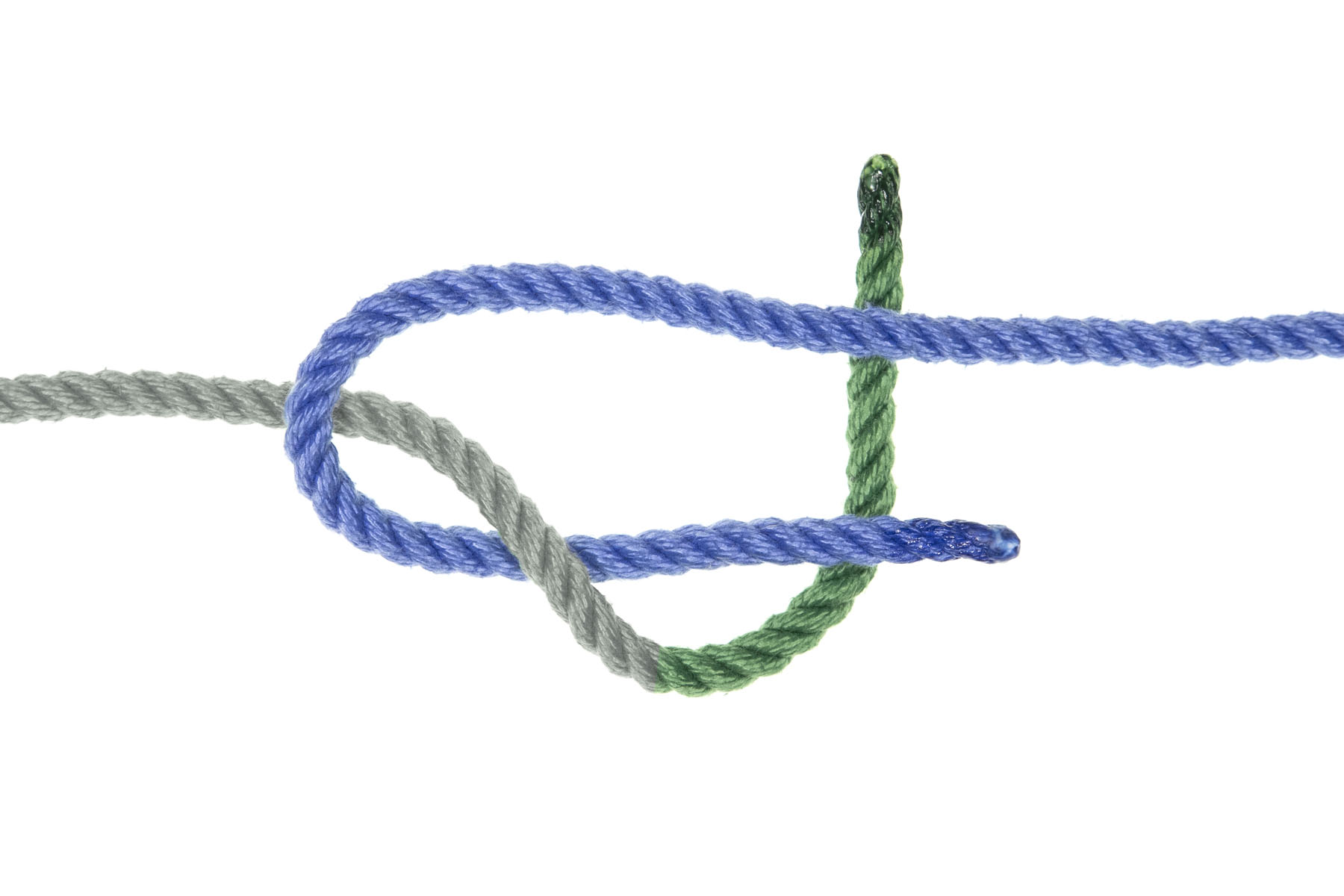
3Cross under both parts of the blue rope.
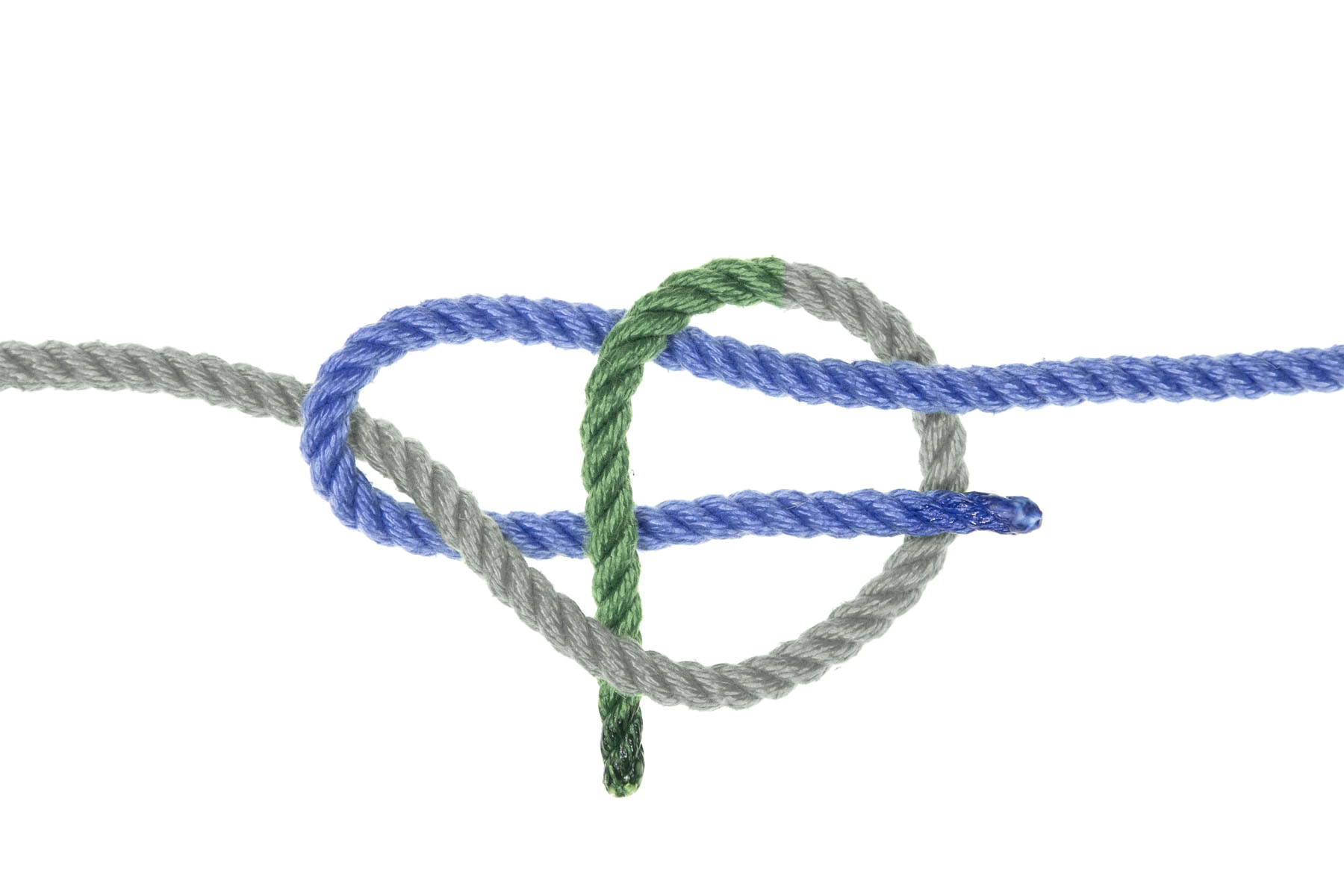
4Go over both parts of the blue rope and under the green rope.
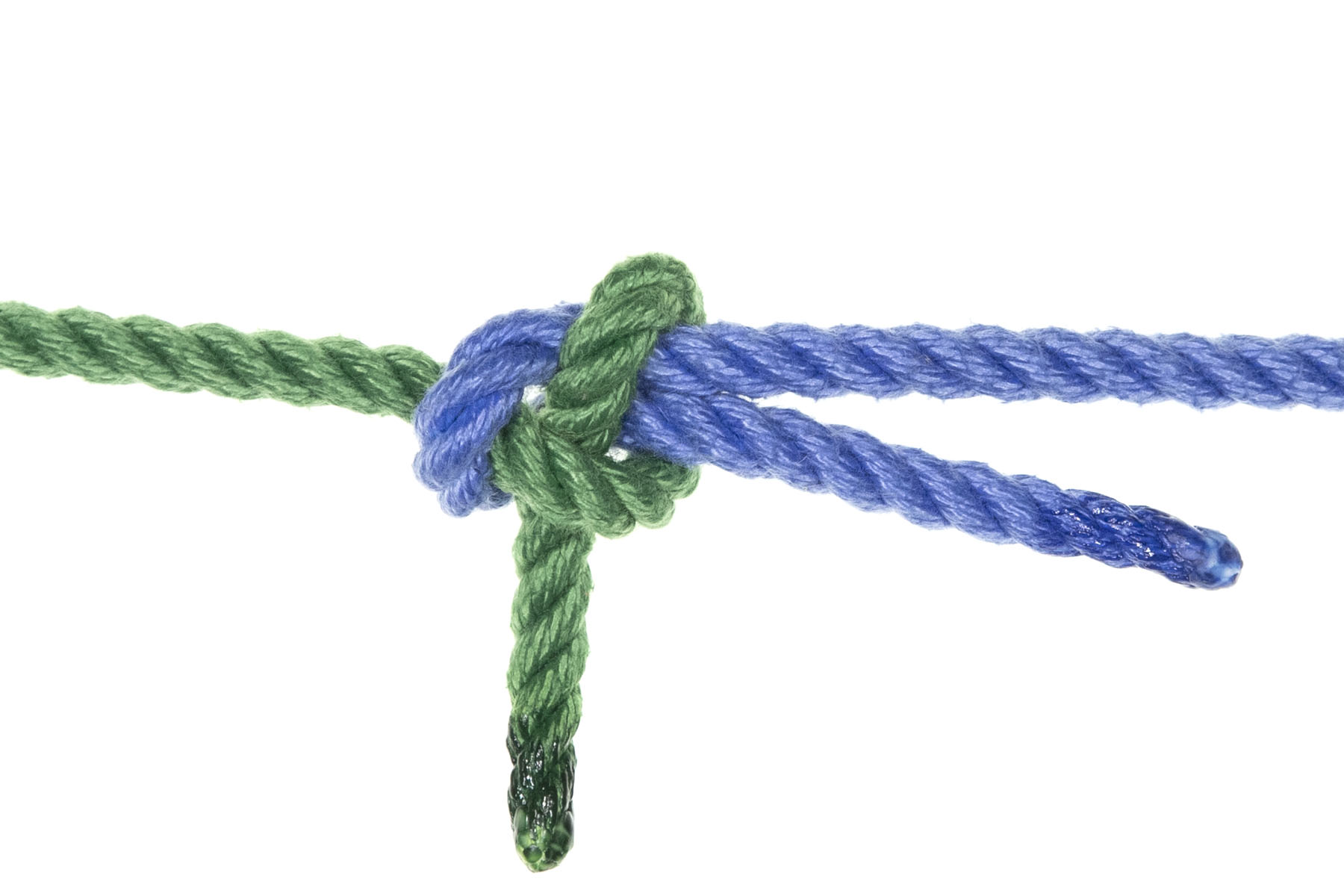
5Snug the knot.
It is important that both working ends are on the same side of the knot.
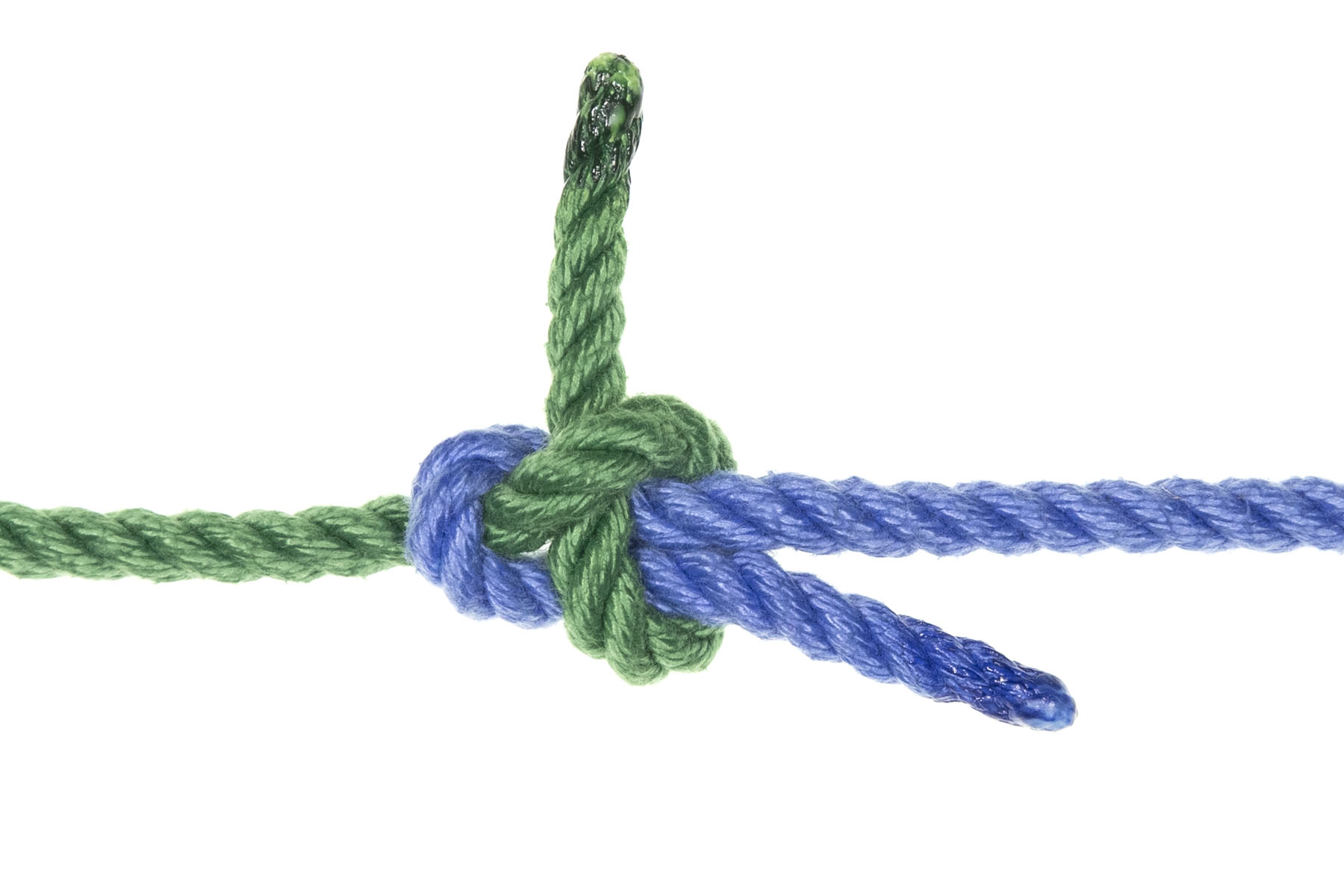
WRONG!The working ends are on opposite sides of this knot, making it a left-hand sheet bend (ABOK 1432). It is less reliable than the true sheet bend.
Notes for nerds
References and naming
This knot is ABOK # 1431